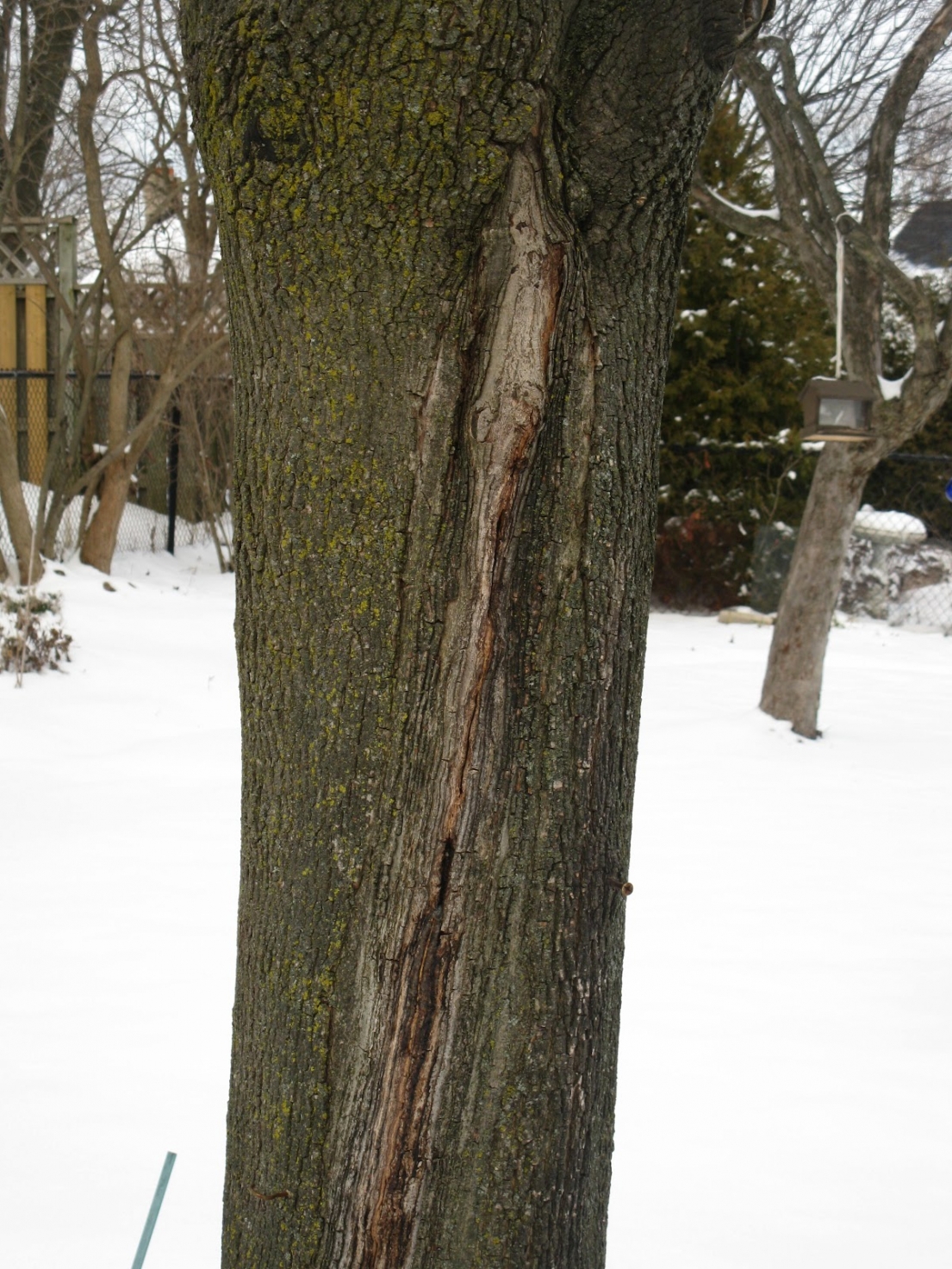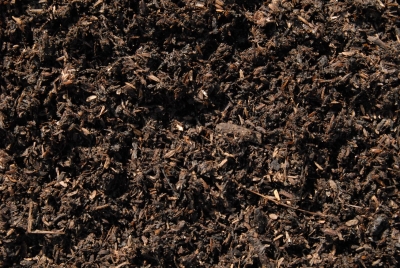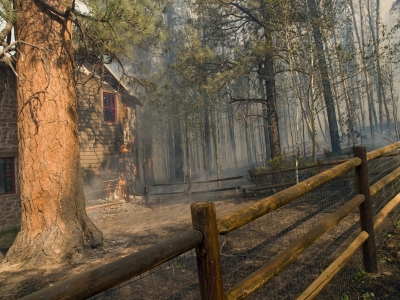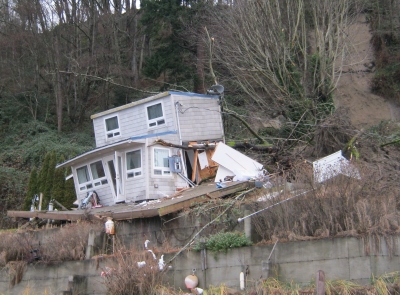This fact sheet discusses sunscald, a significant problem that causes wounding on the trunk of many thin barked trees in cold winter climates. It includes a discussion of why it happens and describes how you can reduce or prevent its occurrence.
Sunscald or southwest winter injury presents a significant threat to the trunks and limbs of certain deciduous trees. Although it can happen on shrubs it is more common on trees. Though it often is said to only affect thin barked trees, a better description is that it generally affects young trees of certain species and does not affect trees with thick bark. Sunscald injury refers to a process in which living cells just inside the outer bark (mostly phloem and cambium) are damaged by day to night temperature fluctuations during the winter months. Phloem is a zone of vascular tissue in the inner bark that carries food to where it is needed in the tree. The cambium is located just inside the phloem and outside the wood or xylem and is a thin layer of cells that divides to form new phloem to the outside and new xylem to the inside.
Damage from sunscald injury can result in discolored bark, bark cracking, sunken areas from lack of growth, or sloughing of surface bark to reveal dead tissue within the damaged area.
Sunscald injury may cause significant stress for trees and presents an avenue for pests and diseases to enter the damaged area. Damage from sunscald injury may eventually heal, but the damaged areas should not be painted or filled with any sealing substance such as paint or tar. However, wrapping with light colored tree-wrap can help. Usually sunscald damage in the northern hemisphere occurs on portions of the tree with south or west exposure. The North US is especially prone to sunscald injury due to its cold winter temperatures, and minimal cloud cover during many sunny winter days.
What is Sunscald Injury?
Sunscald or Southwest injury refers to damage incurred though the killing of active cells within the trunk and limbs of sensitive trees during winter months. Young trees with thin bark are most susceptible to sunscald injury. The injury occurs when exposed bark on the tree warms up on sunny days and previously dormant cells within the plant become active in response to the warmth. Research has shown that the south side of a tree can be as much as 77°F warmer on a cold winter day than the north side of the tree. The newly activated cells lose some of their cold-hardiness and are injured when temperatures drop below freezing during the nighttime hours. Resulting damage includes discoloration and cracking of the bark. The portions of trunks and branches facing south and southwest warm the most because they get the most direct sun and because they get sun later in the day when air temperatures are warmest.
Which Trees Are Most Susceptible to Sunscald Injury?
Deciduous trees with thin bark and southwest exposure are most susceptible to sunscald injury (table 1). Most young trees have thin bark and are therefore susceptible. As most tree species mature, they develop thicker bark and become less susceptible to sunscald injury. However, some species that have thin, dark-colored bark as they mature, like the Prunus genus (cherries, peaches, plums) may remain susceptible or even become more susceptible with age.
Evergreen trees tend not to be as susceptible to sunscald injury because trunks and branches are more likely to be shaded by foliage throughout the winter. Drought stressed trees are more susceptible to sunscald injury than trees that enter the dormant period well-hydrated.
How Can I Protect Trees from Sunscald Injury?
Fortunately, protecting trees from sunscald injury is both easy and inexpensive. All methods amount to keeping the trunk and lower limbs either insulated or shaded in winter. Susceptible plants with south and west exposure can be protected by wrapping the trunk and lower limbs with white tree wrap, which can be purchased at most home and garden stores. White tree wrap reflects light away from the trunk and limbs and keeps the bark surface temperature cooler. Dormant cells will then remain inactive and will be at less risk of being injured if the temperature drops below freezing at night or when temperatures suddenly drop as a cold front or cloud passes by. The wrap should be applied after you declutter garden in late fall before the risk of freezing temperatures and removed the following spring after the risk of freezing nights has passed. Tree wrap not removed in early spring may harbor pests during the growing season. Use tree wrap for a minimum be shaded in winter. If evergreens don’t exist to the south and west, consider planting them. Because drought-stressed trees tend to be more susceptible to sunscald injury, make sure trees are fully hydrated in the fall before the ground freezes. Trees benefit from deeper and less frequent watering events as compared to more shallow rooted plants like turf grass. A layer of mulch around the base of the tree will help conserve soil moisture and moderate temperature. Sunscald injury as defined here is not possible in Utah in summer because all live tissues are metabolically active and temperatures below freezing are rare. However, some trees show sunscald-like injury in the summer. Norway maple, for example, is known for developing extensive wounding around summer pruning wounds and in portions of the crown exposed to the sun by pruning in summer. Though this damage is probably due to excessive heat or tissue drying, it can be countered in the same way. Avoid opening up crowns in summer by pruning more lightly or of two to three winters after planting. Trunk and limb protection are less necessary as the bark thickens. Trunks and limbs can also be protected by placing a lightcolored board or an opaque fence to the south and west of the tree. The board will shade the trunk and keep the bark surface cooler. Some orchardists paint the southwest sides or the entire lower trunks of fruit trees with white latex paint to avoid sunscald injury, again reflecting light to keep tissue cool. For this method, use interior latex paint as some exterior paints contain antimicrobial agents that can be damaging to the tree. Paint can also be diluted 1:1 with water. However, painted trunks may not be esthetically acceptable in the landscape. Good landscape design can also help to avoid sunscald injury. If possible, plant susceptible trees to the north and east of buildings or evergreens sotheir lower portions will by not pruning in summer at all. When a wound is made in summer on the south to west sides of a tree and it is open to the sun, wrap it with white colored tree wrap or white polyethylene sheeting (like a plastic bag) for at least one season to encourage healing/sealing.










Recent Comments